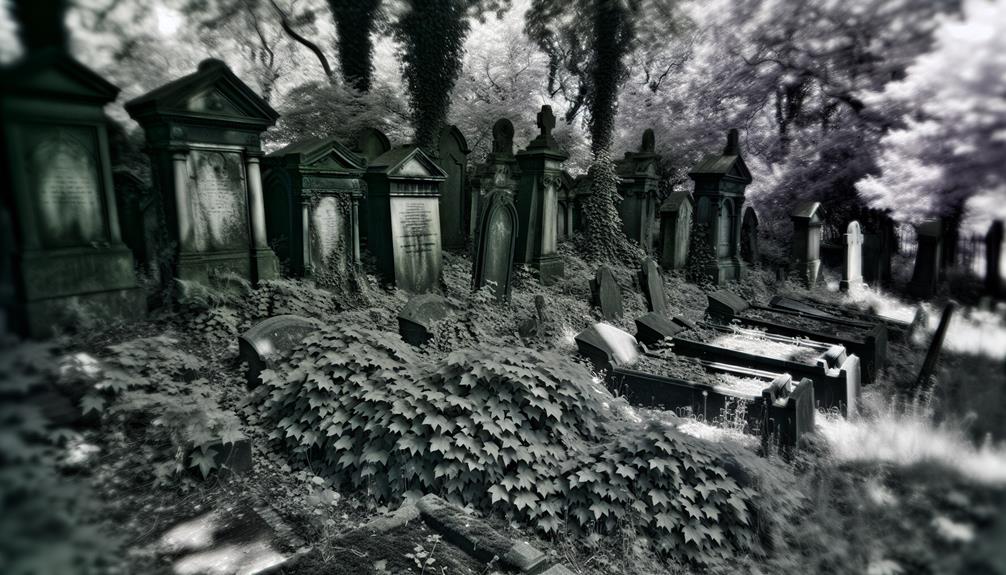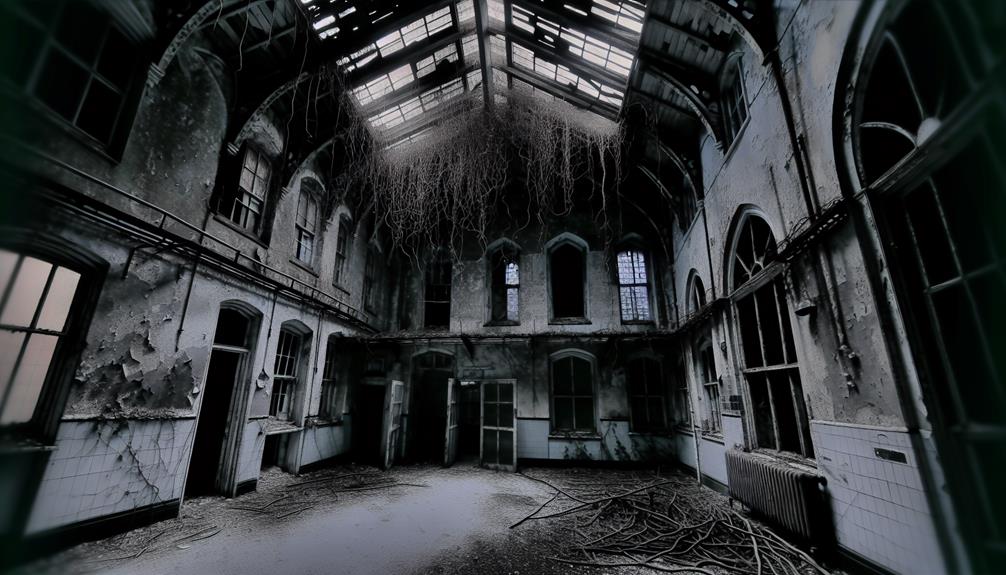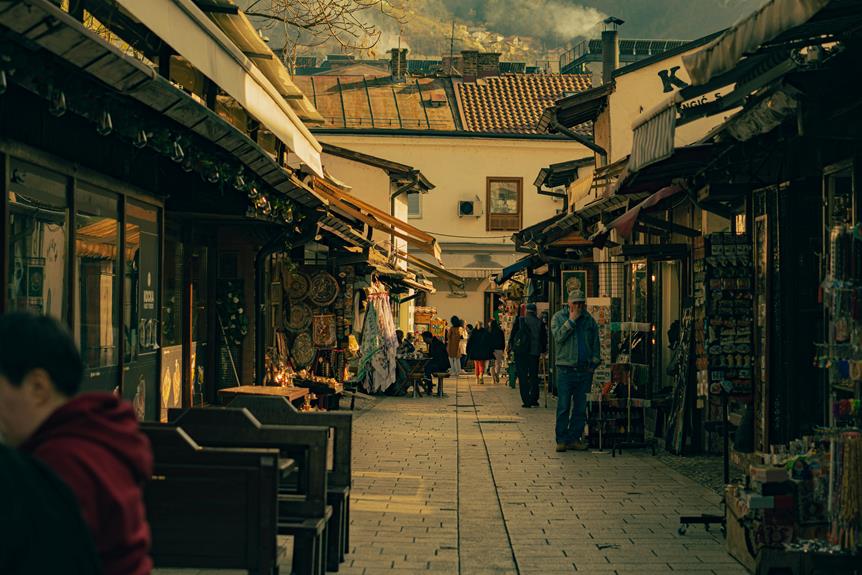Exploring Majdanek is a haunting experience that transcends time, allowing visitors to grasp the magnitude of human suffering that unfolded within its barbed wire confines. The sheer scale of the atrocities committed on this hallowed ground serves as a stark reminder of the depths of inhumanity that can be reached in times of conflict. As one navigates through the remnants of this harrowing chapter in history, a sense of somber reflection envelops them, prompting contemplation on the enduring significance of bearing witness to such profound tragedy.
Key Takeaways
- Majdanek: A significant concentration camp in Eastern Europe.
- Witness to torment of over 150,000 prisoners.
- Camp's layout designed for fear and control.
- Survivor testimonies reveal inhumane conditions.
- Importance of remembrance and education for future generations.
The History of Majdanek
The history of Majdanek concentration camp is a poignant narrative that encapsulates the atrocities committed during World War II in Poland. Established in late 1941, Majdanek was one of the largest concentration camps in Eastern Europe. Its location near Lublin allowed for easy access to train lines, facilitating the transport of prisoners from various parts of Europe. The camp's operational timeline spanned until its liberation by Soviet forces in July 1944, witnessing the torment and suffering of over 150,000 prisoners, many of whom were subjected to forced labor, medical experiments, and mass executions.
The impact on survivors of Majdanek is immeasurable. Those who managed to endure the inhumane conditions faced physical and psychological scars that lasted a lifetime. The horrors experienced within the camp left survivors struggling to reintegrate into society, haunted by memories of loss, pain, and dehumanization. The trauma inflicted at Majdanek reverberated through generations, affecting not only the survivors themselves but also their families and communities.
Despite the passage of time, the legacy of Majdanek endures as a stark reminder of the darkest chapter in human history. The stories of resilience and survival from those who lived through the horrors of the camp serve as a tribute to the strength of the human spirit in the face of unimaginable adversity.
Construction and Layout of the Camp
Nestled within the landscape near Lublin, Majdanek concentration camp was meticulously designed and structured to facilitate the systematic incarceration and exploitation of its prisoners during World War II. The architectural design and layout of the camp played a pivotal role in the dehumanization and suffering of those held within its confines. Here are key aspects of the construction and layout of Majdanek:
- Architectural Design: The camp encompassed a vast area, with a strategic layout that included watchtowers, electrified fences, and barbed wire barriers to prevent escape. The architectural design of Majdanek aimed to instill fear and control among the prisoners.
- Prisoner Barracks: Rows of barracks were constructed to house the thousands of inmates at Majdanek. These barracks were overcrowded, unsanitary, and provided minimal protection against the harsh weather conditions, leading to immense suffering among the prisoners.
- Camp Infrastructure: Majdanek's infrastructure included administrative buildings, storage facilities, and workshops where prisoners were forced to labor under brutal conditions. The camp's infrastructure was designed to maximize efficiency in exploiting the prisoners for slave labor.
- Gas Chambers: In addition to its function as a concentration camp, Majdanek also housed gas chambers where thousands of innocent victims, primarily Jews, were systematically murdered. The presence of these gas chambers highlights the camp's role in the Holocaust and the atrocities committed within its walls.
Daily Life for Prisoners
Amidst the grim reality of Majdanek concentration camp, prisoners faced harrowing conditions that dictated their daily existence. Survival strategies became paramount for those interned within the camp's confines. Prisoners often formed tight-knit groups to share meager resources and provide mutual support. These interpersonal relationships were not only essential for emotional well-being but also for physical survival. Sharing food, clothing, and information became a way to navigate the extreme deprivation and uncertainty that characterized daily life in Majdanek.
In such dire circumstances, prisoners had to resort to various strategies to endure the harsh conditions. Some individuals turned to acts of kindness and solidarity, offering help to those who were weaker or more vulnerable. Others engaged in bartering goods or services to secure basic necessities. The ability to adapt, forge alliances, and display resilience was vital for prisoners attempting to navigate the brutal realities of the camp.
Despite the pervasive atmosphere of fear and oppression, moments of camaraderie and compassion still managed to emerge among the prisoners. These small gestures of humanity served as a glimmer of hope amidst the darkness, reminding individuals of their shared humanity and the importance of connection in the face of unimaginable adversity.
Atrocities and Mass Executions
In the harrowing depths of Majdanek concentration camp, the atrocities committed and the mass executions that took place stand as stark reminders of the unimaginable human suffering endured within its walls. The following points shed light on the horrors witnessed at Majdanek:
- Mass Graves: The grounds of Majdanek bear witness to the presence of mass graves, silent indicators to the countless lives lost within the camp's confines. These graves, filled with the remains of victims who perished due to starvation, disease, or outright brutality, serve as a somber indication of the camp's dark history.
- Survivor Testimonies: Through the poignant accounts of survivors, the world has gained a glimpse into the unspeakable horrors that unfolded at Majdanek. Their narratives vividly describe the inhumane conditions, the systematic dehumanization, and the sheer scale of violence that characterized daily life within the camp.
- Execution Sites: The chilling presence of execution sites within Majdanek speaks to the deliberate and systematic nature of the atrocities committed. Whether through mass shootings or gas chambers, the camp served as a place where systematic extermination was carried out with chilling efficiency.
- Remembrance and Reflection: Today, visitors to Majdanek are urged to remember and reflect upon the atrocities that transpired within its walls. The importance of bearing witness to the past, honoring the memories of the victims, and ensuring that such atrocities are never repeated is paramount in preserving the lessons of history.
Liberation and Aftermath
Following the liberation of Majdanek concentration camp, the aftermath revealed a landscape scarred by profound suffering and the weight of history. The survivors faced immense challenges as they navigated through the ruins of their former lives, grappling with the psychological trauma inflicted upon them by their captors. Rebuilding communities in the wake of such devastation was a monumental task, requiring not only physical reconstruction but also the healing of deep emotional wounds.
To illustrate the impact of liberation and the subsequent aftermath, consider the following table:
| Challenges Faced by Survivors | Ways to Rebuild Communities |
|---|---|
| Psychological trauma | Establishing support networks |
| Loss of family and identity | Providing mental health resources |
| Physical debilitation | Creating spaces for remembrance |
| Lack of resources | Organizing community events |
| Displacement and homelessness | Offering counseling services |
The scars left by Majdanek extended far beyond the physical boundaries of the camp, permeating the very fabric of the survivors' existence. As they sought to piece together their shattered lives, the importance of communal support became evident. Through collective efforts to address psychological trauma and rebuild connections severed by the horrors of the past, the survivors of Majdanek set out on a journey towards healing and resilience.
Commemoration and Memorialization
Upon confronting the enduring legacy of Majdanek's profound suffering and historical weight, the essential task of commemoration and memorialization emerges as an important step in honoring the resilience of those who endured the camp's atrocities. Commemorating the lives lost and the suffering endured at Majdanek is a vital duty that demands both reverence and respect.
Here are four key ways through which the memory of Majdanek is preserved and honored:
- Memorial Ceremonies: Regular memorial ceremonies are held at Majdanek to mark significant dates such as the camp's liberation or other key historical events. These ceremonies serve as a poignant reminder of the human cost of war and the importance of never forgetting the past.
- Remembrance: Individuals and groups visit Majdanek to pay their respects and reflect on the horrors that took place within its walls. Through acts of remembrance, the memory of the victims is kept alive, ensuring that their stories are never lost to history.
- Art Installations: Artistic tributes and installations are often used to evoke emotions and provoke contemplation about the events that transpired at Majdanek. These symbolic gestures serve as a powerful means of connecting with the past and fostering a sense of empathy and understanding.
- Symbolic Gestures: From laying flowers at memorial sites to lighting candles in remembrance, symbolic gestures play an essential role in honoring the victims of Majdanek. These acts of commemoration convey a sense of solidarity and shared humanity, ensuring that the legacy of Majdanek lives on for future generations.
Artifacts and Exhibits
Preserving the historical narrative of Majdanek's harrowing past, the artifacts and exhibits that are curated within the camp's confines serve as poignant reminders of the atrocities that unfolded during its dark history. These items hold personal stories of those who suffered within the camp's walls, shedding light on individual experiences amidst the overwhelming scale of tragedy. Symbolism is intricately woven into each artifact, reflecting the cultural identities and personal belongings of the victims, making the horror of Majdanek more tangible to visitors.
To understand the significance of these artifacts and exhibits, it is important to acknowledge the preservation efforts that go into maintaining them. Each item is a reflection of the meticulous work undertaken to make sure that the memories of those who perished are not forgotten. The artifacts also hold cultural significance, representing a shared history that must be remembered and honored.
| Artifacts and Exhibits | Description |
|---|---|
| Personal Belongings | Items such as clothing, shoes, and suitcases belonging to the victims. |
| Photographs | Images capturing life in the camp and the individuals who were imprisoned there. |
| Letters and Diaries | Written accounts that provide insight into the personal experiences of the prisoners. |
| Religious Items | Objects of spiritual significance that reflect the diverse backgrounds of those imprisoned. |
Through these artifacts and exhibits, Majdanek stands as a place where history is not only remembered but felt, creating a space for reflection and remembrance.
Visiting Majdanek Today
Exploring the historical significance and somber realities of Majdanek, a visit to the site today offers a sobering perspective on the atrocities that took place within its confines. The experience of visiting Majdanek serves as a significant reminder of the horrors of the Holocaust and the importance of remembrance. Here are some key aspects to take into account when visiting Majdanek today:
- Survivor Testimonies: Walking through Majdanek allows visitors to connect with the past through the powerful stories of survivors. Their testimonies provide a firsthand account of the atrocities committed at the camp, adding a human element to the historical narrative.
- Remembrance: The memorial at Majdanek stands as a tribute to the victims who perished within its walls. Visitors are encouraged to pay their respects and honor the memory of those who suffered and died at the camp.
- Modern Challenges: The preservation of Majdanek faces ongoing challenges, including environmental factors and the passage of time. Efforts to maintain the site and its artifacts require constant attention and resources to make certain that future generations can continue to learn from this dark chapter in history.
- Preservation: Despite these challenges, the preservation of Majdanek is vital in ensuring that the memory of the victims lives on. By safeguarding the site and its stories, we can educate current and future generations about the consequences of hatred and intolerance.
Educational Programs and Resources
In the domain of Holocaust education and commemoration, the implementation of educational programs and the availability of resources play an essential role in fostering understanding and preserving the memory of the victims of Majdanek concentration camp. Survivor testimonies and documentaries are powerful educational tools that bring to light the harrowing experiences endured by those who were imprisoned in Majdanek. These firsthand accounts provide a personal and emotional connection to the history of the camp, offering invaluable insights into the atrocities that took place there.
Educational workshops offer participants the opportunity to engage with historical experts, explore the intricacies of the Holocaust, and investigate the specific events that transpired at Majdanek. These workshops not only educate but also encourage dialogue, reflection, and critical thinking about the past to make certain that such atrocities are never repeated.
Moreover, virtual tours provide an accessible means for individuals around the world to engage with the history of Majdanek. Through immersive digital experiences, participants can virtually navigate the camp, view historical artifacts, and gain a thorough understanding of the site's significance. This technology enables a broader audience to connect with this history and serves as an essential resource for educators, students, and the general public seeking to learn about Majdanek and honor the memory of its victims.
Honoring the Victims
To pay tribute to the countless individuals who perished at Majdanek concentration camp is to acknowledge the profound loss and suffering endured within its walls. Honoring the victims of Majdanek is an essential aspect of preserving the memory of those who suffered unimaginable horrors during one of humanity's darkest periods.
Here are some ways in which the victims are honored at Majdanek:
- Memorial Ceremonies: Regular memorial ceremonies are held at Majdanek to commemorate the victims and make sure that their stories are not forgotten. These ceremonies bring people together to reflect on the past and honor the memory of those who lost their lives at the camp.
- Remembrance Initiatives: Various remembrance initiatives take place at Majdanek, including art exhibitions, lectures, and guided tours that focus on the experiences of the victims. These initiatives aim to educate visitors about the atrocities committed at the camp and the importance of remembrance.
- Historical Preservation: Efforts in historical preservation ensure that the physical structures at Majdanek are maintained to honor the victims and provide a tangible link to the past. Preserving the camp allows future generations to witness firsthand the conditions in which the victims lived and died.
- Education Initiatives: Educational programs at Majdanek play an essential role in making sure that the stories of the victims are passed down to future generations. Through guided tours, workshops, and online resources, visitors learn about the history of the camp and the individuals who were imprisoned there.
Frequently Asked Questions
What Impact Did Majdanek Have on the Local Community?
The impact of Majdanek on the local community was profound. Survivor testimonies reveal the lasting trauma and grief experienced by those who lived in close proximity to the camp. The atrocities committed at Majdanek reverberated through the community, leaving a legacy of sorrow and remembrance.
The presence of the camp served as a constant reminder of the horrors of the Holocaust, shaping the collective memory of the community for generations to come.
Are There Any Surviving Structures From the Camp?
There are surviving structures from Majdanek, the concentration and extermination camp in Poland. These structures hold immense historical significance, serving as tangible reminders of the atrocities that occurred there.
They stand as solemn witnesses to the suffering and loss experienced by countless individuals during one of the darkest chapters in human history.
Preserving these structures is vital in honoring the memory of the victims and ensuring that future generations never forget the horrors of the past.
How Has the Landscape Around Majdanek Changed Over Time?
Over the years, the landscape surrounding Majdanek has undergone a profound transformation, reflecting the evolution of the camp's history.
Environmental changes, both natural and man-made, have left their mark on the terrain, shaping it into a haunting reminder of the atrocities that took place there.
The juxtaposition of nature's resilience with the scars of human cruelty creates a poignant backdrop that serves as a solemn affirmation to the past.
What Role Did Resistance Play Among the Prisoners?
Resistance played a pivotal role among prisoners in concentration camps, with solidarity and underground organizations forming the backbone of their defiance. The role of solidarity provided emotional support and a sense of belonging, while underground organizations coordinated acts of resistance, such as sabotage and communication networks.
This defiance was a form of resilience in the face of unimaginable suffering, showcasing the strength and determination of individuals to resist oppression and maintain a sense of humanity.
How Has the Local Government Supported the Preservation of Majdanek?
'United we stand, divided we fall.'
The local government has played a vital role in supporting the preservation of Majdanek by recognizing its historical significance as a concentration and extermination camp. Through funding, maintenance, and educational initiatives, the government guarantees that this somber reminder of the past is upheld for future generations to learn from.
Their dedication to honoring the memory of those who suffered within its walls is a proof of the importance of preserving such sites.
Conclusion
To sum up, Majdanek stands as a haunting echo of the past, reminiscent of a dark shadow that stretches across history. It serves as a somber reminder of the atrocities committed during the Holocaust, inviting visitors to walk through the shadows of Poland's concentration and extermination camp.
Through survivor testimonies, memorial tributes, and educational initiatives, Majdanek guarantees that the voices of the victims are heard and their stories never forgotten.


